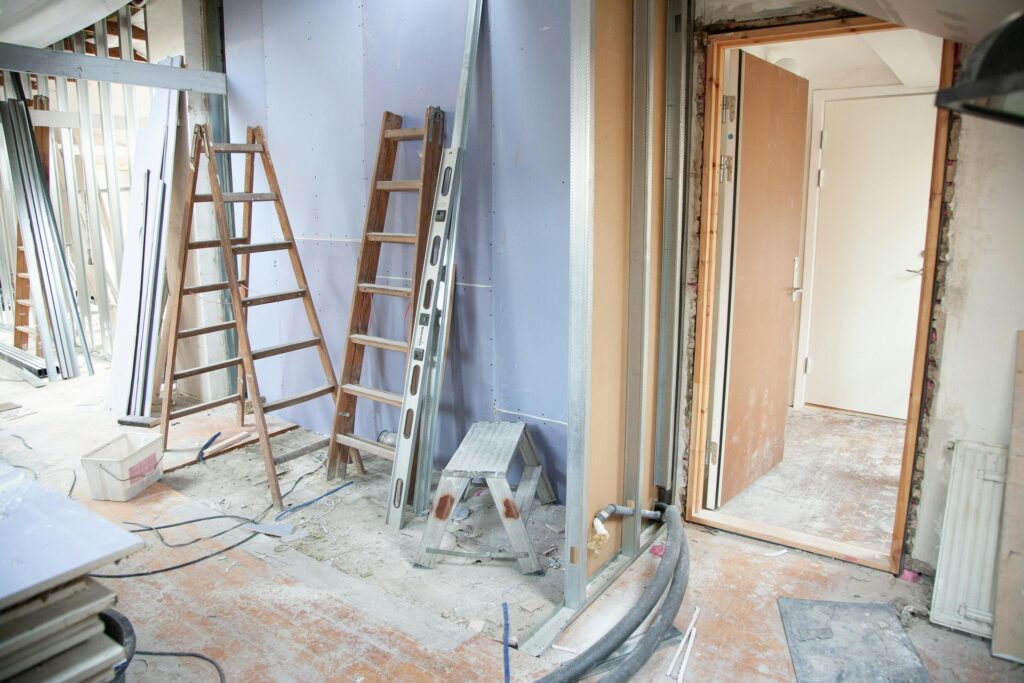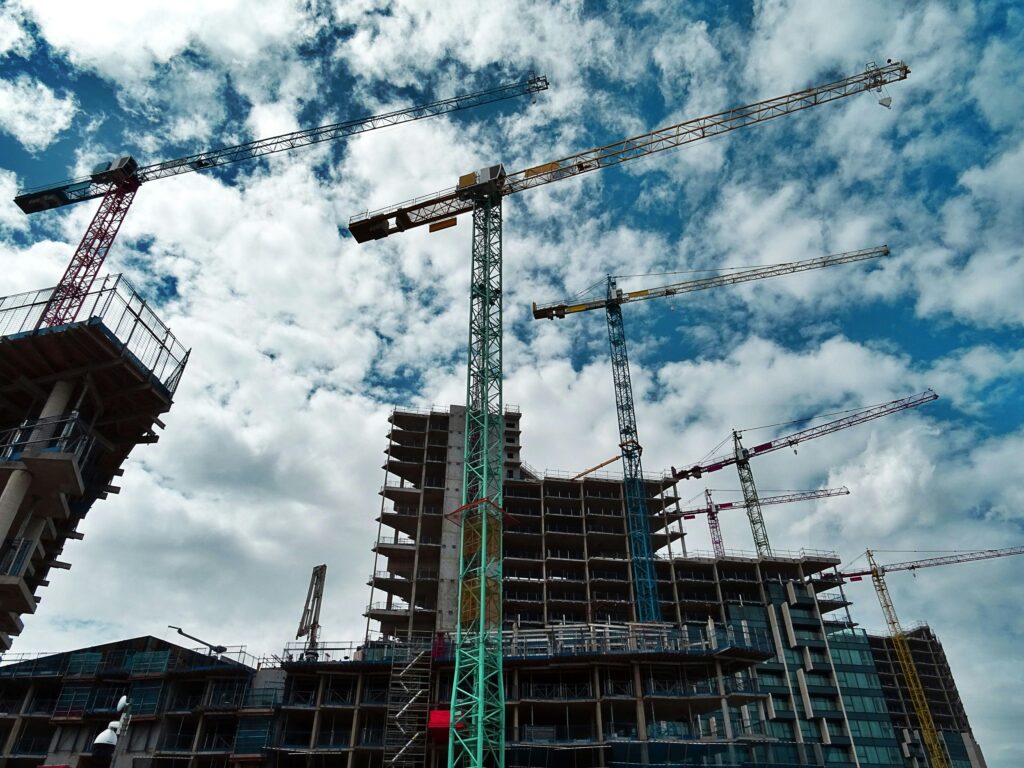
How Investing in Tenant Improvements Can Boost Your Property’s Net Operating Income (NOI)
Property improvements can take many forms, from minor upgrades, (like new carpet and painting the walls) to major renovations (such as reconfiguring spaces, upgrading lighting, or even complete build-outs of unfinished spaces.)
Whatever your improvements are – from small aesthetic tweaks to new fit-outs, tenant improvements aren’t just about looks. They can also significantly boost your bottom line.
In fact, making property improvements is one of the most effective and efficient ways to boost your property’s NOI (Net Operating Income), and tenant improvements are no different.
Here’s how investing in tenant improvements can boost your property’s net operating income.

What is NOI (Net Operating Income)?
NOI stands for Net Operating Income, and it is essentially your property’s earnings after all operating expenses have been paid.
It’s like the paycheck your property earns, with the operating expenses being the bills it needs to pay. Maximizing NOI is a straightforward strategy to enhance profitability and tenant contentment.
While NOI calculation does not directly include tenant improvements or capital expenditures, the enhancements made through these improvements can lead to higher rental income, reduced vacancies, and lower operating costs over time.
This, in turn, can result in an improved NOI by indirectly influencing the income and expenses associated with the property.
Why is NOI Important?
NOI isn’t just a number on a balance sheet; it is the temperature check for your investment, indicating overall health, profitability, and potential.
By increasing NOI, you are maximizing the profitability of your property. When done right – this is not just a win for you, but for your tenants, too.
Why Consider Tenant Improvements?
Tenant improvements play a critical role in enhancing the tenant experience in commercial buildings. They make your property more attractive to prospective tenants, command higher rental rates, and lead to shorter vacancy periods.
But they also allow occupants to customize their leased spaces to suit their specific business, which can lead to enhanced productivity, efficiency, and overall satisfaction.
Properties that allow tenant improvements are generally more attractive to high-quality prospective tenants.
By offering a tenant improvement allowance or working closely with tenants on their customization requirements, property managers show a commitment to meeting unique needs and fostering long-term relationships.
Satisfied tenants are also more likely to renew their leases, reducing turnover costs and maintaining consistent revenue streams for you.

How Tenant Improvements Can Boost NOI
Here are some specific ways that tenant improvements boost NOI.
Improve Property Value
Tenant improvements can significantly enhance a property’s aesthetic appeal and functionality, making it more appealing to high-quality tenants and increasing its market value overall.
Upgrades to common areas, building systems, and design can contribute to this increased value.
Compliance with Regulations
Ensuring a property meets the latest building codes and regulations can prevent costly fines and legal issues. This protects the property’s income stream and potentially reduces insurance premiums due to enhanced compliance and safety standards.
Enhanced Safety and Security
Investments in safety and security can lead to reduced insurance costs and liability risks, contributing to lower operating expenses.
A secure environment also enhances tenant satisfaction, leading to higher retention rates and stable rental income.
Reduce Operating Costs
By considering the implementation of energy-efficient upgrades, property managers can lower operating costs and positively impact NOI.
Cost-saving improvements like LED lighting and HVAC system upgrades reduce expenses. And they may also appeal to more environmentally conscious tenants.
Increase Leasable Square Footage
Optimizing space layouts to increase leasable square footage allows for additional revenue generation from rent and directly contributes to an increase in NOI.
Attain & Retain Tenants
Enhanced facilities and amenities often make a property more attractive to current and potential tenants, leading to lower vacancy rates and higher tenant retention.
Reduced tenant turnover minimizes turnover costs and ensures a consistent revenue stream, saving property managers time and money.
Generate Higher Revenue
Premium amenities and customized improvements allow for higher rental rates, which directly boost gross rental income.
The key is to balance the cost of improvements with the potential for increased rents to ensure a positive return on investment.
Community and Brand Image
A property that is perceived positively in the community can attract high-quality tenants and investments, enhancing the property’s reputation and allowing for premium rental pricing.
Keeping Up With Competitors
Tenant improvements are a strategic way to ensure your property remains competitive.
Properties that lag in offering modern amenities, efficient spaces, or aesthetic appeal can quickly fall out of favor with potential tenants.
By regularly updating your property and aligning improvements with market demands and trends, you can ensure your property stands out.

Are tenant improvements right for you?
Investing in tenant improvements necessitates a careful analysis of your current leases, tenant mix, and the overall vision for your property.
Analyze your current leases
Tenants have rights to their space for the duration of their lease, so be sure to thoroughly review the lease to understand what you can and cannot do while they are in effect.
Consider tenant needs
Tenant renovations done with NOI in mind should consider the benefit of retaining current tenants and attracting additional complementary and profitable new tenants.
Learn how to leverage tenant feedback to maximize NOI here.
Study the best use of your property
The most feasible and profitable use of your property may change over time.
Depending on your property’s highest use, it could be time to reimagine your property for a use that will bring you more value.
Consult with a commercial appraiser for expert guidance on your property’s most profitable purpose.
Comply with zoning regulations
Any renovations, use change, or renovations will require alignment with zoning regulations and entitlement.
Ensure that your intended use of the property, as well as any physical modifications you plan to make, are permitted under local zoning laws.
Before starting any project, it’s crucial to consult with local zoning boards or municipal planning departments to understand the specific requirements and restrictions for your property.
Failure to comply with zoning regulations can lead to costly delays, fines, or even the need to undo renovations that do not meet legal standards.
Ensure uninterrupted cash flow
If you have an existing loan on your property, your lender plays a crucial role in any redevelopment plans you may have.
Your lender will want to ensure that any redevelopment that takes place will not interfere with cash flow. If it does, it may not be permitted.
Engage your lender early in the planning process and prepare to have a plan ready that demonstrates how you will manage cash flow and loan obligations during and after redevelopment.

Strategic Planning for Tenant Improvements
When planning tenant improvements, collaboration is key.
Be sure to consult with tenants prior to improvements and ensure you have the right team for construction and design on your side. This will ensure you/your tenant’s vision aligns with building capabilities and zoning requirements.
It’s important, too, to conduct a thorough cost-benefit analysis prior to beginning your construction to ensure that you’re investing in the right improvements that will, ultimately, boost NOI.
Working with a Preferred Contractor on Tenant Improvements
Working with a preferred contractor when making tenant improvements is an easy way to simplify communication and coordination in tenant improvements.
Quality and Consistency
By consistently working with the same contractor(s), property managers can ensure a certain level of quality and consistency in the work performed across their property.
Efficiency and Reliability
Preferred contractors understand the property manager’s processes and standards, which can lead to more efficient project completion.
Their familiarity with the property and its management team can also make them more reliable partners, as they have a vested interest in maintaining a positive, ongoing relationship.
Cost Management
Property managers may negotiate better rates or terms with contractors with whom they have an ongoing relationship.
This can make it easier to manage costs within the confines of the tenant improvement allowance, ensuring that both the tenant’s and the property manager’s financial interests are served.
Compliance and Permitting
Preferred contractors are typically familiar with local building codes, permitting processes, and any specific compliance issues related to the property.
This expertise helps ensure that all tenant improvements are compliant and permitted correctly, avoiding potential legal and financial complications.
It’s important to note that while working with a preferred contractor can offer many advantages, property managers should still ensure that the process remains competitive and transparent. Some management companies may allow tenants to propose their contractors for consideration, especially if those tenants have specific design visions or existing relationships with contractors they trust.
Ultimately, the goal is to achieve a balance between maintaining high standards and providing flexibility to tenants, ensuring that the improvements meet both parties’ needs and expectations effectively.

Getting Started with Tenant Improvements
Investing in tenant improvements is a savvy strategy for property owners looking to increase their NOI. By enhancing property value, reducing costs, and improving tenant satisfaction, you can ensure your investment remains competitive and profitable for years to come.
Looking to give your property that competitive edge and boost your NOI through smart, well-executed tenant improvements?
InterVision is here to help.
As the leading commercial contractor in Tennessee, we exist to help you turn your vision into a profitable reality. Let’s chat about how we can elevate your property together.
Leave a Reply Cancel reply
We pledge to navigate every phase of your project with meticulous care and transparency.
WHAT YOU CAN EXPECT
learn more
We are a General Contractor partnering with professionals and organizations to bring commercial building visions to life.
Who we are
Serving the Greater Memphis, TN Metropolitan area and beyond.
Serving the Greater Memphis, TN Metropolitan area and beyond.